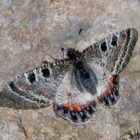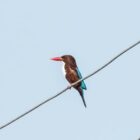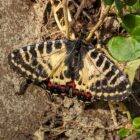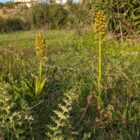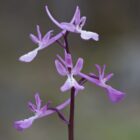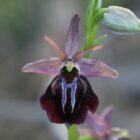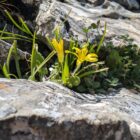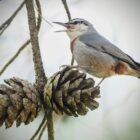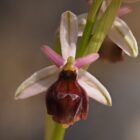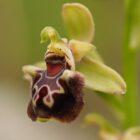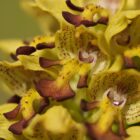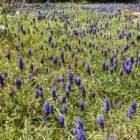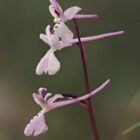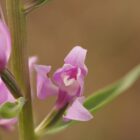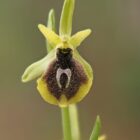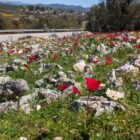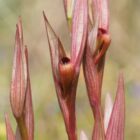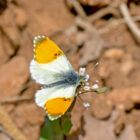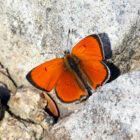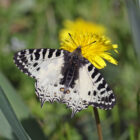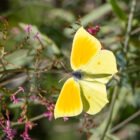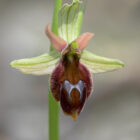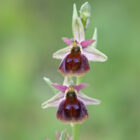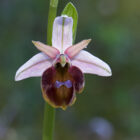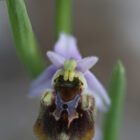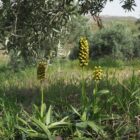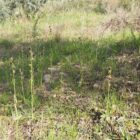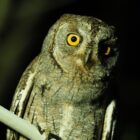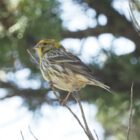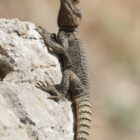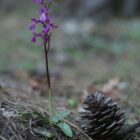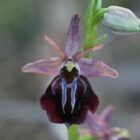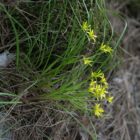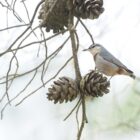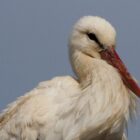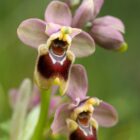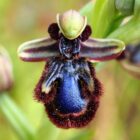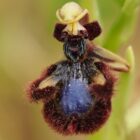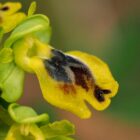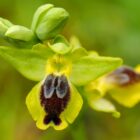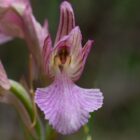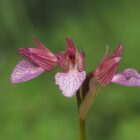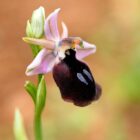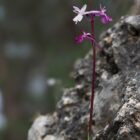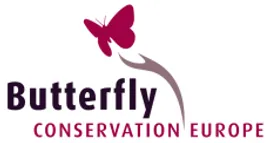Dates & Prices |
BOOK NOW |
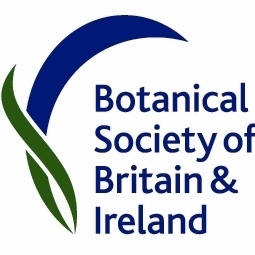 Dates: 24th – 30th March 2026 Confirmed departure
Dates: 24th – 30th March 2026 Confirmed departure
Price: £1,595 Full
Single Room Supplement: £150
Deposit: £150 per person
Price Includes: All meals, accommodation with private facilities, ground transport, services of guides, trip report
Not Included: Flights, travel insurance, drinks & any other personal items.
Conservation Donation: 10% of profits donated to Botanical Society of Britain & Ireland
Leader: Hamza Soyden & Sean Cole
Group Size: Minimum of 4 & a maximum of 6 guests plus 2 leaders
Grade: Gentle paced walks in a variety of terrains. Ideally suited to photography.
Holiday Highlights
- See 30-40 species of Orchid
- Orchid targets & local specialities include Orchis punctulata, Ophrys lucis, Ophrys climaciss, Ophrys pallidiconi, and Cephalanthera kurdica
- Led by Hamza Soyden & Sean Cole (co-author of Britain’s Orchids)
- Small group for maximum guest enjoyment & care of sensitive habitats
- Some good birds, including White-throated Kingfisher, Krueper’s Nuthatch, and Brown Fish Owl
- Spring butterflies such as False Apollo, Eastern Festoon, Nogel’s Hairstreak, Grecian Copper & more!
A new & exciting orchid focused tour to the Turkish Riviera region of Antalya in Southwest Turkey!
The Western Taurus Mountains form an arc around the Gulf of Antalya. It has numerous peaks rising above 3,000m, with Mt. Kizlarsivrisi, at 3,086m the highest peak. At lower elevations, the predominant vegetation is forest and woodland of evergreen oaks and Turkish pine (Pinus brutia), and areas of maquis shrubland. Once one climbs above 1,200 metres the habitat changes to montane forests of black pine (Pinus nigra), Lebanon cedar (Cedrus libani), Taurus fir (Abies cilicica), and juniper (Juniperus spp.). The high peaks are home to alpine meadows. The Turkish Riviera (or Turquoise Coast) is an area of southwest Turkey encompassing the provinces of Antalya and Muğla. The overall area is an attractive mixture of a favourable climate, warm sea, mountainous scenery, fine beaches along more than a 1,000 km of shoreline, and an abundance of natural and archaeological features. Our main botanical target is the beautiful stately “Queen of Turkish orchids”, Orchis punctulata, a species in serious decline in the region due to development and collection. Last year, our guides, Hamza Soyden & Sean Cole, saw hundreds of these beautiful orchids across several sites, mostly found by themselves. In addition, we will see several other local and special orchids, such as Ophrys lucis (Rhodian Horseshoe Orchid), Ophrys climacis (Kemer Oprhys), Ophrys pallidiconi (Pallidoconi Late-spider Orchid), and Cephalanthera kurdica (Kurdish Helleborine). As well as orchids and other wildflowers we will target key birds, such as White-throated Kingfisher, Kruper’s Nuthatch (which is common in the forests of the area), Rock Nuthatch, Ruppell’s Warbler and Sombre Tit. One night we can opt to go out into the mountains with an experienced guide in the hope of seeing the ultra-rare Brown Fish Owl, found in only a few sites in southern Turkey, and strictly nocturnal. (additional cost for this trip). We will also take time to spot some butterflies. Although it’ll be quite early in the flight season we should still be able to see some interesting species, such as the beautiful False Apollo and Eastern Festoon, Gruner’s Orange-Tip, Nogel’s Hairstreak, Cleopatra, Grecian Copper, and others. During our days in the field, we’ll also see (and hear!) mating tortoises, plus there’ll be the ubiquitous Starred Agama & other lizards for some additional herpetological interest. The area includes a number of interesting and important archaeological locations, some of which we plan to include in our exploration – especially those which are also home to a range of significant flora & fauna of interest. This new tour provides a wide variety of wildlife, alongside our main orchid targets, and promises to be a popular spring tour – we recommend enquiring and booking early!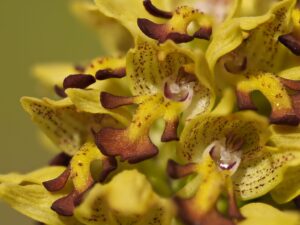
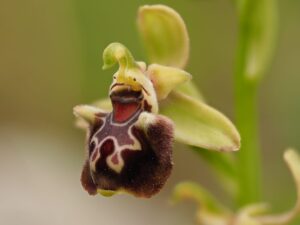
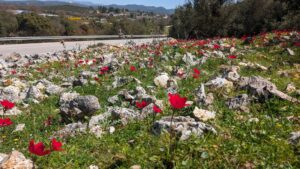
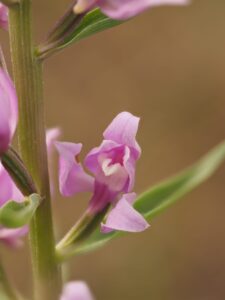
Day 1: Antalya – Kemer
Meet at Antalya airport (AYT) and drive to Kemer, where we will be staying in a hotel close to the Mediterranean Sea.
We will start by searching forest areas in Beydaglari sahil mili parki just inland from Kemer, searching the roadsides and forests for Ophrys osmanica, Cephalanthera kurdica, Orchis italica and Orchis anatolica. Other plants that can be seen here Limodorum abortivum and Cyclamen maritimum (not in bloom).
Further up the road here in the forest area should be Ophrys heterochila, Anacamptis syriaca and Orchis anatolica. Other species seen here include (milkvetch) and Cyclamen maritimum (not in bloom).
We will then retire to our hotel and have an evening meal locally to share sightings and get to know each other.
Day 2: Kemer & Mount Chimaera
Another area close to the Hotel is Mount Chimera, famed for natural vents that sometimes produce flames directly from the ground! Targets here include Ophrys blitopertha, Anacamptis collina, Orchis anatolica, Anacamptis syriaca, Serapis bergonii, Ophrys lyciensis.
Depending on the success of this area, we can travel further south to see more of the local specialities.
Day 3: Kemer – Manavgat
We will depart Kemer and head east towards Side, which is roughly 2.5 hours away. En route, we can call into a forest site to look for Kruper’s Nuthatches, a speciality of the area. These birds are very territorial at this time of year, so should show well. There will be orchids along the way too, and mating Tortoises if we are lucky!
For those who prefer butterflies to birds, we can instead search a site to the west of Antalya en route, to look for False Apollo. For those interested in history and archaeology, there is the opportunity to see an ancient Greek site in the heart of the mountains.
Overnight at our hotel in Manavgat.
Day 4: Manqavgat – Akseki
Drive up to Akseki – a town in a wildlife-rich mountainous region of Anatolia. This area is famed among wildlife enthusiasts for its rich biodiversity. The cemeteries in the town are also famed for their wildflowers, including orchids. We will spend the entire day here.
Birds include Kruper’s Nuthatch, Sombre Tit, Ortolan Bunting, Serin, Ruppel’s Warbler, Red-fronted Serin, birds of prey. Herps include Greek Tortoise and Starred Agama. Orchids include Ophrys lucis, Epipactis helleborine and Himantoglossum comperianum (not in flower), Cephalanthera kurdica and other, more common species.
There is also a meteor crater site nearby for those interesting in seeing it. The location and habitat mean this will also produce plenty of interesting wildlife.
Today there is also the option to continue west into the mountains to look for Brown Fish Owl, an extremely rare breeding bird in Turkey, with only four or five known pairs. This involves searching by torchlight along a beautiful ravine at night.
If the group wishes to take this option, we will eat in Akseki and go on form there, into the night as long as people are happy to continue. Of course, we may get lucky and see the owl straight after dark!
Day 5: Manavgat
If we go to the Fish Owl site the previous night, we will have a later start and stay local to Manavgat today. However, we should still see lots of orchids and other wildlife. We will start by going to search sites for Orchis punctulata site and have a packed lunch next to a shallow, clear river, where those inclined might like to take a swim! Other species to be seen are various Ophrys, Serapias bergonii and politisii, and we should also see Ophrys pallidoconi.
Day 6: Manavgat – Green Canyon
Today we will search out more Orchis punctulata to ensure we see the best possible specimens – unless of course everyone was satisfied with yesterday’s results! We will head to the famous Green Canyon, a beautiful lake in the hills just to the north of Manavgat. Here there are many places we can explore, our targets being the extremely rare Ophrys pamphilica, plus O. mammosa, tenthredinifera, osmanica, herae etc etc.
There are several tourist sites here also, such as the ancient city of Lyrbe, with its Necropolis, ancient baths and floor mosaics, or we can explore the Green Canyon and its beautiful viewpoints of the lake and mountains.
Evening meal in Manavgat.
Day 7: Manavgat – Antalya
After breakfast, we will head to the metropolis of Antalya, capital on Antolia, where we have an excellent site along a river that hold both common and White-throated Kingfishers. If we are lucky, we will see the latter sat on telegraph wires and in dead trees alongside the road.
This site is close to the airport, so we will end the trip on a high before we say our farewells.
To follow
To follow


